#max lavelle
Text



morgankei: Congrats to @vanessahudgens & @cotuck on doin the damn thang!
💄 @meaganadelemakeup
💇♀️& color @lmarington
👗 ✂️ @chris_tits88
#Vanessa Hudgens#Cole Tucker#Morgan Marcell#Laura New#Stella Hudgens#Max Clayton#Hailey Lavelle#Sarah Hyland#Alexandra Shipp#Instagram#Gallery
18 notes
·
View notes
Note
MAX FRIED CAREER HIGH STRIKE OUTS
LILY YOHANNES SCORES
CRYSTAL DUNN GOAL
SOPHIA SMITH DEFIES PHYSICS.
CASEY MURPHY IS A GD BRICK WALL.
ROSE LAVELLE 100 CAPS.
TONIGHT IS A USWNT/BRAVES NIGHT AND 2019 JORDAN IS THRIVING! 😋
3 notes
·
View notes
Text
I’M SORRY. NOW, TRUST ME.
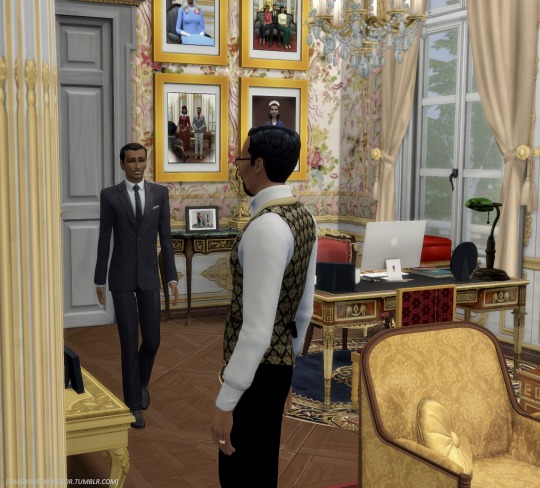

[Buckingsim Palace, Buckingsimshire]
Martin Lavelle [P.S.]: Your Majesty, the Queen’s portrait sitting in the Throne Room should be ending shortly.
King George: Thank you, Martin. Say, did that letters patent pass in Parliament yet? I’d like to present it to Prince Vester as soon as we arrive at Sumpterson.
Martin Lavelle [P.S.]: I will contact the Prime Ministers office for a status update, Your Majesty.

(Indistinct chatter)
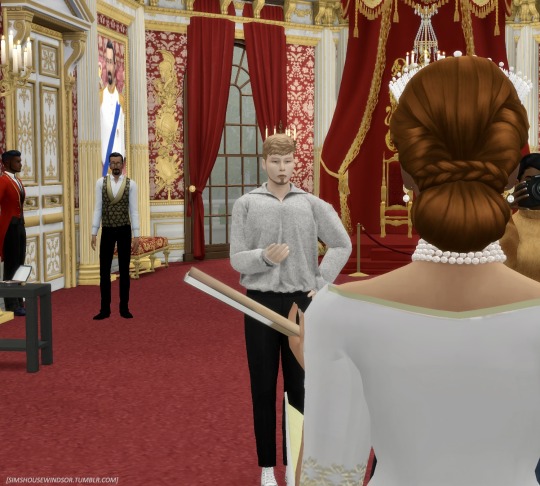
Brandon [Director]: Let’s get a few shots with you wearing your sash, Your Majesty.
Queen Rowena: I’ll need about five minutes to put it on.
Brandon [Director]: Perfect! We can reset. (to crew) Let’s take five, everyone!

Queen Rowena: I didn't know you were back.
King George: I got back after midnight. Martin said your shoot was ending and I wanted to say hi before you left for your next engagement. This looks like a large production. My portrait sittings only consist of me and, at max, two others.
Queen Rowena: There’s wardrobe, makeup, hair, the photographers and director and even a handler of the jewels!
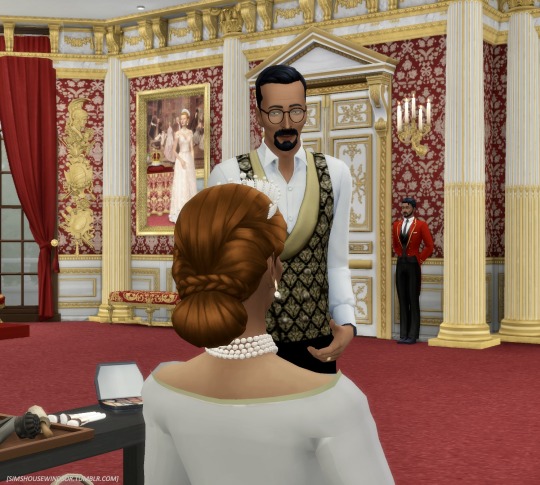
King George: You look absolutely beautiful, Ro! (surprised) The Pearl Sunburst tiara!
Queen Rowena: Thank you, George.
King George: My mother loaned you her favorite tiara?
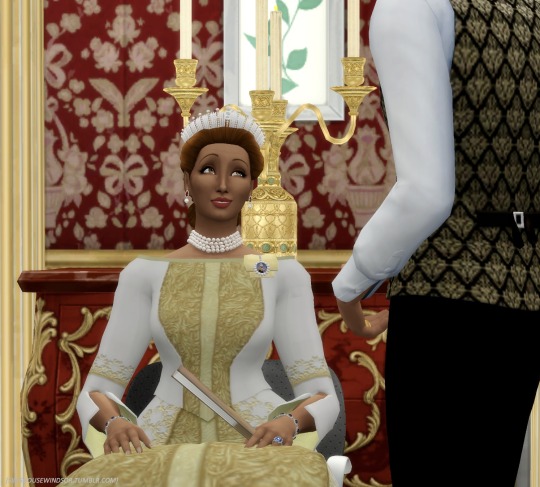
Queen Rowena: In addition to the tiara, she also loaned me pieces from previous consorts!
King George: Really? The Queen Mother? Wow! Old age is softening her heart.
Queen Rowena: I’m wearing Queen Lara-Leigh’s pearls, Queen Adaline’s Ruby Teardrop earrings and her famous fan. These patthama bracelets were commissioned by Queen Lara-Leigh and are from the same Sapphire stone used to create Queen Isabella’s engagement ring, now my ring!
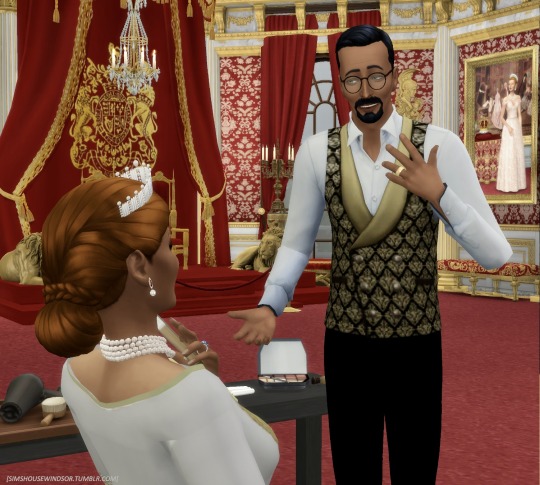
King George: Ro, I know I’ve neglected you the last few weeks and I apologize. You mean more to me than searching for any stone in the world. Let’s go to Sumpterson for the weekend, just us!
Queen Rowena: (gasps) Really? George, I...
King George: Before you say no, Martin already checked and your schedule will allow for a weekend break. Plus, I’m the King! (laughs)

Queen Rowena: I’d love to!
King George: “Great, I’ll have Martin make the arrangements.”

Queen Rowena: (reluctant) I’m trusting you, George.
King George: This will be a memorable trip, Ro! Trust me. A trip of surprises!
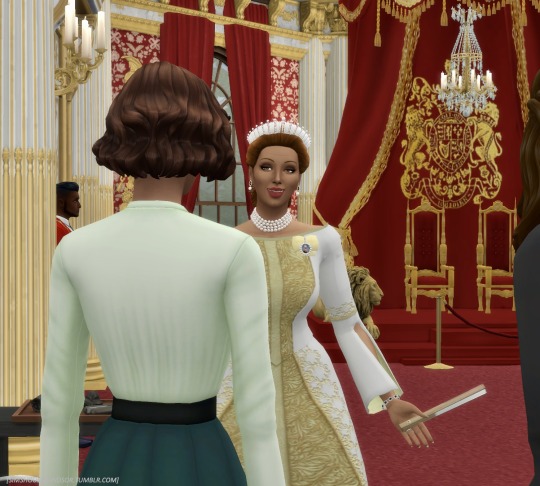
Queen Rowena: It appears my schedule for the weekend must be cleared. Can you make that happen?

Lady Delores [P.S.]: I don't think cancelling engagements would be such a good idea, Your Majesty. We are still rebuilding your image and you have quite a few engagements to attend tomorrow.
Queen Rowena: Whatever you need to do, Delores. If I can't leave with George tomorrow, I will leave the day after.
Lady Delores [P.S.]: Yes, Your Majesty.

King George: Proceed with travel to Sumpterson. I’d like the Queen and I to leave tomorrow.
Martin Lavelle [P.S.]: Will this be for the weekend, as previously noted?
King George: Yes, Martin. We will just be gone for the weekend. I would thoroughly like to shoot some hares while I'm there. Secure a group to join me.
Martin Lavelle [P.S.]: Yes, Your Majesty.
Previous | Beginning | Next - continue The Amethysts Quest (story)
Previous | Beginning | Next - continue Consort Redemption (story)
#simshousewindsor#simshousewindsor ts4#TS4#sims 4#ts4 royal simblr#ts4 royalty#sims 4 royalty#sims 4 monarchy#the sims 4#ts4 story#the sims 4 royalty#sims 4 royal family#thesims4#the sims 4 story#sims 4 story#simshousewindsor jewels of the crown
6 notes
·
View notes
Text
SOCCER: USWNT Opens 2023 Campaign In Wellington/Te Whanganui-A-Tara
The U.S. Ladies' Public Group will start off a gigantic 2023 in Wellington/Te Whanganui-a-Tara, New Zealand, taking on the 2023 FIFA Ladies' Reality Cup co-have Football Plants at Sky Arena. The game will start off on Jan. 18 at 4 p.m. nearby NZT, which will be 10 p.m. ET on Jan. 17 back in the US and will be accessible for review stateside on HBO Max, with pre-game inclusion starting at 9:30 p.m. ET and present game inclusion on follow.

The 2023 opener in Wellington, which will act as the host city and setting for the USA's subsequent gathering stage match against the Netherlands throughout this mid year's Reality Cup, will be the first of two gatherings between the USA and New Zealand during this outing Down Under. The groups will meet again three days after the fact in Auckland/Tāmaki Makaurau for a standoff at the famous Eden Park, New Zealand's Public Arena. The opening shot for the subsequent match is scheduled for 4 p.m. NZT on Jan. 21 (10 p.m. ET on Jan. 20; HBO Max).
Fans can likewise follow the activity by means of Twitter (@USWNT), Instagram (@USWNT), Facebook and the authority U.S. Soccer Application.
USWNT Nitty gritty Program BY POSITION (CLUB; Covers/Objectives)
GOALKEEPERS (3):
Adrianna Franch (Kansas City Current), Casey Murphy (North Carolina Fortitude), Alyssa Naeher (Chicago Red Stars)
Safeguards (8):
Alana Cook (Old Rule), Emily Fox (Dashing Louisville FC), Gem Dunn (Portland Thistles FC), Naomi Girma (San Diego Wave FC), Sofia Huerta (Old Rule), Hailie Mace (Kansas City Current), Becky Sauerbrunn (Portland Thistles FC), Emily Sonnett (Old Rule)
MIDFIELDERS (7):
Sam Coffey (Portland Thistles FC), Lindsey Horan (Olympique Lyon, FRA), Taylor Kornieck (San Diego Wave FC), Rose Lavelle (Old Rule), Kristie Mewis (NJ/NY Gotham FC), Ashley Sanchez (Washington Soul), Andi Sullivan (Washington Soul)
Advances (6):
Ashley Trapdoor (Washington Soul), Alex Morgan (San Diego Wave FC), Midge Purce (NJ/NY Gotham FC), Trinity Rodman (Washington Soul), Mallory Swanson (Chicago Red Stars), Lynn Williams (NJ/NY Gotham FC)
The 24-player program called up for this outing highlights 21 players who partook in the USA's November Instructional course and matches against Germany toward the finish of 2022. The USWNT will be
without advances Sophia Smith and Megan Rapinoe for these games, both of whom scored in the November friendlies against Germany, as both are returning from minor wounds. Safeguard Emily Sonnett and forward Lynn Williams return to the program subsequent to missing huge time in 2022 because of injury while forward Midge Purce likewise is back in camp for the USWNT.
Thirteen players on this program saw activity in the latest gathering between the USWNT and New Zealand, which came on Feb. 20 at Poise Wellbeing Sports Park in Carson, Calif. During the 2022 SheBelieves Cup. Ashley Lid and Mallory Swanson, previously Pugh who will currently be playing under her wedded name, both scored in the success as the Americans additionally constrained three New Zealand own objectives in the 5-0 triumph.
Go THROUGH DOWN UNDER
This January camp, which will advertise the very first games for the USWNT in New Zealand, furnishes the USWNT with the extraordinary and priceless experience of getting to remain and prepare in the city in which it will headquarters during the World Cup, as the USA will be situated in Auckland/Tāmaki Makaurau for the span of the gathering stage.
The USA will likewise get to play at the two its Reality Cup bunch stage scenes this month, as Sky Arena, which will be known as Wellington Local Arena during the World Cup because of sponsorship guidelines, will be the site of the USA's second Gathering E match against the Netherlands on July 27 (opening shot at 1 p.m. NZT; 8 p.m. ET on July 26 in the USA). The USA's Reality Cup opening match against Vietnam (July 22 at 1 p.m. NZT; 8 p.m. ET on July 21) and third gathering stage match against the Gathering A Season finisher Victor (Aug. 1 at 7 p.m. NZT; 3 a.m. ET) will both be organized at Eden Park in Auckland.
Leading the pack up to the 2019 FIFA Ladies' Reality Cup, the USA likewise had the valuable chance to encounter travel and preparing On the planet Cup have country, holding its January camp in France and opening the 2019 timetable with a match against 2019 FIFA Ladies' Reality Cup has France in Le Havre.
SERIES HISTORY: USA Versus NEW ZEALAND
The USA and New Zealand have played multiple times beforehand with the USWNT driving the general series 17-1-1. The solitary misfortune for the Americans arrived in a 1-0 loss during the main gathering between the groups on Dec. 15, 1987. From that point forward, the USA is unbeaten in the last 18 no holds barred matchups with the Football Greeneries, scoring at least five objectives in every one of the last four gatherings. The groups attracted 1-1 during a cordial October of 2013.
The latest gathering between the groups came 11 months prior at the 2022 SheBelieves Cup, a 5-0 triumph for the Americans in Carson, Calif on Feb. 20, 2022, behind objectives from Seal and Swanson and three New Zealand own objectives. Preceding that, the groups got down to business in the gathering phase of the postponed 2020 Olympics, a 6-1 triumph for the Americans as Rose Lavelle, Lindsey Horan, Dedicate Press and Alex Morgan scored while the USA constrained the Football Plants into two own objectives.
The gathering during the Tokyo Olympics denoted the fourth sequential Olympics in which the USA and New Zealand have gotten down to business, a streak that started during bunch stage play in 2008.
THE WORLD CUP Is standing by
The 2023 FIFA Ladies' Reality Cup will start off on July 20 as co-have New Zealand takes on Norway in Auckland/Tāmaki Makaurau. After an hour, co-have Australia opens against the Republic of Ireland in Sydney/Gadigal. The full competition plan alongside the opening shot times can be seen as here.
The USA, which has equipped for each FIFA Ladies' Reality Cup in history and will look to lift the prize for a fifth time frame, will confront World Cup debutant Vietnam, Netherlands and the Gathering A Season finisher Champ - - either Portugal, Thailand or Cameroon - - in Gathering E, playing the whole of the gathering stage in New Zealand. The U.S. will open Gathering E play against Vietnam on July 22 at Eden Park in Auckland/Tāmaki Makaurau and afterward face the Netherlands on July 27 at Wellington Local Arena - otherwise called Sky Arena - in Wellington/Te Whanganui-a-Tara, denoting the initial time in FIFA Ladies' Reality Cup history that the two finalists from the past competition will meet in bunch play. The USA will then finish off the gathering stage against the Gathering A Season finisher Victor on Aug. 1 at Eden Park in Auckland/Tāmaki Makaurau.
The Between Confederation End of the season games will decide the last three capability spots for the 2023 FIFA Ladies' Reality Cup, including the USA's last adversary for the gathering stage. The ten-group season finisher competition will happen in New Zealand from February 17-23, 2023, and highlights ten countries split into three gatherings, with the victor of each gathering meeting all requirements for the Ladies' Reality Cup. Bunch A will highlight Cameroon against Thailand on Feb. 18 with the champ taking on Portugal for a billet to the World Cup on Feb. 22.
AUSTRALIA/NEW ZEALAND 2023 Gatherings
Bunch A: New Zealand, Norway, Philippines, Switzerland
Bunch B: Australia, Ireland, Nigeria and Canada
Bunch C: Spain, Costa Rica, Zambia and Japan
Bunch D: Britain, Gathering B Season finisher Champ, Denmark and China PR
Bunch E: USA, Vietnam, Netherlands and the Gathering A Season finisher Champ
Bunch F: France, Colombia, Jamaica, Brazil and the Gathering C Season finisher Victor
Bunch G: Sweden, South Africa, Italy and Argentina
Bunch H: Germany, Morocco, Colombia and Korea Republic
Single match passes are accessible among now and Walk third through FIFA's tickets entrance on a the early bird gets the worm premise. Costs will begin at AUD/NZD$20 for grown-ups and AUD/NZD$10 for kids. For more data about the 2023 FIFA Ladies' Reality Cup visit the 2023 FIFA World Cup center point.
2023 SHEBELIEVES CUP, Introduced BY VISA, Just around the corner
Following these January games in New Zealand, the USA will return stateside for the February FIFA Global Window, where it will have the eighth yearly SheBelieves Cup, introduced by Visa®. The current year's competition will run from Feb. 16-22 as Brazil, Canada and Japan join the USA for the four-group worldwide competition. Each of the four countries will be taking part in the 2023 FIFA Ladies' Reality Cup the following summer and every one of the four are positioned in the main 11 on the planet with the USA at No. 1, Canada at No. 6, Brazil at No. 9 and Japan at No. 11.
The SheBelieves Cup will get back to its conventional three-setting design with matches played at Exploria Arena in Orlando, Fla., GEODIS Park in Nashville, Tenn. what's more, Toyota Arena in Frisco, Texas. Play starts off on Thursday, Feb. 16 at Exploria Arena as Japan takes on Brazil (4 p.m. ET) and the USA faces Canada (7 p.m. ET). The competition resumes on Sunday, Feb. 19, as the opposition moves to Nashville's GEODIS Park with the USA playing the principal match of the day against Japan (2:30 p.m. CT/3:30 p.m. ET) and Brazil confronting Canada (5:30 p.m. CT/6:30 p.m. ET) in the nightcap. The competition finishes up on Wednesday, Feb. 22 at Toyota Arena in Frisco, Texas, with Canada taking on Japan (3 p.m. CT/4 p.m. ET) and the USA confronting Brazil in the competition finale (6 p.m. CT/7 p.m. ET). Broadcast data for all the matches will be accessible sometime in the future.
USA List NOTES
Starting from the beginning of 2020, the USWNT has played 33 matches in the US and 18 external the country. The USA is 30-1-2 in homegrown matches and has outscored the resistance 130-6 (+124) at home and is 10-4-4 with a 35-16 objective edge (+19) while playing outside the USA.
The most covered player on this program is Becky Sauerbrunn at 211, followed Alex Morgan (200), Precious stone Dunn (126) and Lindsey Horan (122) while the most un-covered players are Casey Murphy (11), Adrianna Franch (10), Trinity Rodman (10), Naomi Girma (10), Hailie Mace (8), Taylor Kornieck (7) and Sam Coffey (4).
Morgan procured her 200th cap on Nov. 13 in the USA's match against Germany in Harrison, N.J., turning out to be only the thirteenth player in USWNT history to arrive at the 200-cap achievement.
Morgan is the top scorer on the list in worldwide play with 119 objectives. Lindsey Horan has 26. Swanson has 25 and Dunn has 24 objectives for the USWNT while Rose Lavelle has 22.
Seventeen unique players scored for the USWNT in 2022 - Sophia Smith (11), Mallory Swanson (7), Catarina Macario (5), Alex Morgan (4), Rose Lavelle (4), Kristie Mewis (3), Ashley Sanchez (3), Ashley Trapdoor (2), Trinity Rodman (2), Midge Purce (2), Kelley O'Hara (1), Jaelin Howell (1), Andi Sullivan (1), Taylor Kornieck (1), Emily Sonnett (1), Lindsey Horan (1) and Megan Rapinoe (1).
The USA's other six objectives in 2022 came through own objectives, the most ridiculously ever in a schedule year in program history with three on Feb. 20 versus New Zealand, and one each on April 12 versus Uzbekistan, June 28 versus Colombia and Sept. 6 versus Nigeria.
Nine unique NWSL clubs are addressed on this program, alongside 2021-22 UEFA Ladies' Bosses Association champs Olympique Lyon, drove by four players each from the Washington Soul and Old Rule, and three players each from Portland Thistles FC, San Diego Wave FC and NJ/NY Gotham FC.
IN Concentration: NEW ZEALAND | FIVE THINGS TO Be aware
Current FIFA World Positioning: 24
OFC Positioning: 1
FIFA Nation Code: NZL
World Cup Appearances: 5 (1991, 2007, 2011, 2015, 2019)
Best World Cup finish: Gathering stage
Record versus USA: 1-17-1
Last Gathering versus USA: February 20, 2022 (5-0 win for the USA in Carson, Calif.)
Mentor: Jitka Klimkova (CZE)
Title Respects: OFC Ladies' Countries Cup Champions (1983, 2007, 2010, 2014, 2018); AFC Ladies' Heroes (1975)
NEW ZEALAND WOMEN'S Public SOCCER Group Program BY POSITION
GOALKEEEPERS (3):
1-Erin Nayler (IFK Norrköping), 21-Murphy Sheaff (Jacksonville College, USA), 23-Brianna Edwards (Wellington Phoenix FC)
Protectors (8):
7-Ali Riley (Holy messenger City FC, USA), 18-Mackenzie Barry (Wellington Phoenix FC), 19-Liz Anton (Perth Magnificence, AUS), 24-Partner Green (Vålerenga, NOR), 30-Ashleigh Ward (Southampton FC, ENG), 31-Anna Green (Sydney FC, AUS), 35-Elegance Neville (London City Lionesses, ENG), 37-Rebecca Lake (Canterbury Joined Pride)
MIDFIELDERS (7):
12-Betsy Hassett (Wellington Phoenix FC), 15-Daisy Cleverley (HB Køge, Cave), 20-Jana Radosavljevic (DSC Arminia Bielefeld, GER), 28-Ava Collins (St John's College, USA), 29-Jacqui Hand (Åland Joined together, Blade), 32-Aniela Jensen (College of the Pacific, USA), 33-Elegance Wisnewski (Wellington Phoenix FC)
Advances (9):
9-Gabi Rennie (Arizona State College, USA), 11-Olivia Possibility (Celtic FC, SCO), 13-Paige Satchell (Wellington Phoenix FC), 16-Emma Rolston (Wellington Phoenix FC), 22-Hannah Blake (College of Michigan, USA), 25-Elegance Jale (Canberra Joined together, AUS), 27-Indiah Paige Riley (Brisbane Thunder), 34-Tayla O'Brien (Eastern Rural areas AFC), 36-Deven Jackson (Eastern Rural areas AFC)
NEW ZEALAND List NOTES
The Football Greeneries have equipped for each big showdown since the 2007 FIFA Ladies' Reality Cup. New Zealand showed up at the Olympics the previous summer, having equipped for each Olympic Games since its presentation in 2008, and will play in its fifth sequential World Cup in the late spring of 2023.
Practically the aggregate of NZL's list plays club soccer outside the nation and they are spread across the world in Australia, the USA, Scotland, Iceland, Denmark, Norway, Germany and Finland.
As these matches are occurring outside a FIFA window, the Greeneries are feeling the loss of a couple of standard call-ups, yet have a determination of exceptionally experienced players.
Group commander Ali Riley, who plays for Heavenly messenger City FC in the NWSL, is the most experienced Greenery on the list with 147 covers and two objectives. Riley, who experienced childhood in Southern California and went to Stanford, has burned through a large portion of her master vocation abroad, spending around seven years in Sweden, one Germany and one in Britain, she returned the USA to play for the Orlando Pride and was exchanged to Holy messenger City FC before last season.
Beginning goalkeeper Erin Nayler, who plays for IFK Norrköping in Sweden and has 78 covers, has had a few brilliant games against the USA throughout the long term.
Veteran midfielder and previous California Brilliant Bear Betsy Hassett (137/14) acquired her 100th cap against the USA during the match in 2017 in Colorado. Hassett played with U.S. forward Alex Morgan at Cal.
Midfielder Daisy Astutely played school soccer at UC Berkeley and Georgetown and presently plays expertly in Denmark.
Five players on this New Zealand program are as of now playing school soccer in the USA including Gabi Rennie of Arizona State who scored in New Zealand's 2-1 misfortune to Australia at the 2020 Summer Olympics in Japan. Rennie was a piece of the New Zealand U-17 group which impacted the world forever by winning NZL's most memorable decoration at a FIFA Word Cup with a third-place finish at the 2018 FIFA U-17 Ladies' Reality Cup. Two different players on this program, safeguard Mackenzie Barry and midfielder Beauty Wisnewski, were likewise in that group.
Lead trainer Jitka Klimkova was the lead trainer for the U.S. U-20 WYNT during the 2020 World Cup cycle and was additionally lead trainer U.S. U-19s as well as head scout for the U.S. group at the 2018 FIFA U-20 WWC in Papua New Guinea.
She came to U.S. Soccer from New Zealand Football League, where she was lead trainer of the New Zealand U-17 Ladies' Public Group and an associate mentor for the Greeneries U-20 Ladies' Public Group more than 2013 and 2014, likewise filling in as an associate mentor for the senior New Zealand Ladies' Public Group in 2014.
#World Cup 2023#world cup#fifa women's world cup#Women's World Cup#FIFA World Cup#FIFA#fifa 2023#soccer#football#soccer 2023
2 notes
·
View notes
Video
vimeo
SKATEBOARDING IN OAKLAND from Ryan Reichenfeld on Vimeo.
*D&AD Pencil Winner*
*Vimeo Staff Pick*
SKATEBOARDING IN OAKLAND is a short film about a group of friends growing up in West Oakland as a new skatepark is being built in their neighborhood.
This is not a story about surviving tough circumstances in a harsh environment; this is a story about perspective and thriving in the face of it all.
Directed by: RYAN REICHENFELD
Director of Photography: RYAN CARMODY
Producer: JETT STEIGER
Editor: SEAN STENDER
Original Score: RANDY RANDALL
Colorist: BRANDON CHAVEZ
Post Production Producer: REMY FOXX
Post Production Sound: MATT MILLER
Agency Creative Director: DAVID KRAMER
Agency Producers: LIEN NGUYEN, ASHLEIGH MARIE PARKER
Production Assistants: ROMAN KOVAL, MARIO AYALA
Skateboarders: LEM WEST, PAT MORAN, RAME TCHAK, AL PARTANEN, JAFIN GARVEY, ELIJAH VAIREY, GABE MARQUEZ, TERREL NEWELL, LAVELLE VINSON, JOSH MATHEWS, MARIUS SYVANEN, ELIJAH “PRINCE” WILLIAMS, LORENZO, “APOLLO” JETSON, RODNEY “DOOKIE” WILLIAMS, CAMERON “CAM” EICHENBAUM
Special Thanks: ERIK WOLSKY, MATT SHARKY, MAX SCHAAF, KARL WATSON, JAMES BARNETT, IMPRINT PROJECTS, CUT+RUN LA EDITORIAL, WAYS & MEANS, LIME SOUND, K-DUB, CSLA
Commissioned by: LEVI’S
Shot on Location in OAKLAND, CA
0 notes
Text

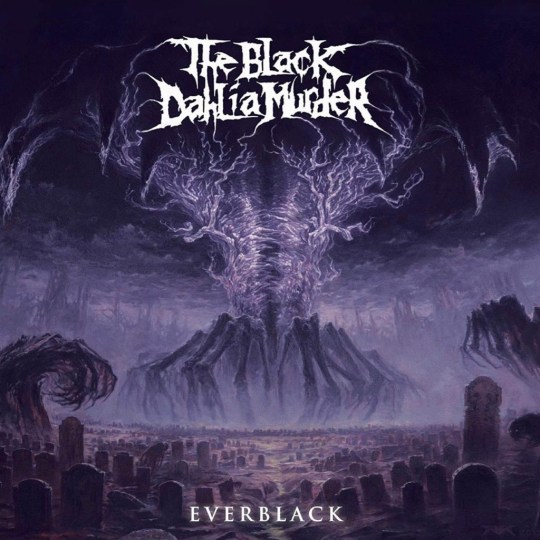
June 11th 2013 The Black Dahlia Murder released the album “Everblack”
Did you know..
It was their first release to feature drummer Alan Cassidy and bassist Max Lavelle.
The album debuted at number 32 on the Billboard Charts.
0 notes
Text
The Black Dahlia Murder Live Preview: 9/3, Concord Music Hall, Chicago

Photo by David E. Jackson
BY JORDAN MAINZER
On their 9th studio album Verminous (Metal Blade), The Black Dahlia Murder continue to do what they do best, show off their versatility in performance and metal subgenre. Produced by their guitarist/backup vocalist Brandon Ellis, it was released just after COVID hit last year, and tonight, they play their first tour date since the pandemic at Concord Music Hall in Chicago. The album’s title track opens with--what else--Alan Cassidy’s blast beats as Ellis and guitarist Brian Eschbach add choppy riffs and cascading solos, Trevor Strnad’s alternating icy screams and guttural growls guiding the song along. Overall, they combine technical tempo changes with the fast-paced bombast of old school British metal. The galloping guitars and drums on “Removal of the Oaken Stake” recall Iron Maiden (on the day a new IM album comes out!), while a song like “Child of Night” sports drums and Max Lavelle’s bass so quick it’s almost pure noise. And where vocal chants follow the same pattern as the guitars, as on “Sunless Empire”, there’s still roam for soaring solos. The penultimate track is a 40-second acoustic interlude, gorgeous picking combined with sounds of dripping water and squeaking rodents before the band launches into closer “Dawn of Rats”. It’s the most different song on the record, but it exemplifies the band’s ability to seamlessly combine the beautiful with the ugly.
Minneapolis prog metal band After the Burial, San Diego County deathcore band Carnifex (who we’re fans of and are, too, releasing a great new album today, Graveside Confessions via Nuclear Blast), Pennsylvania technical death metal band Rivers of Nihil, and Rochester death metal band Undeath open. Remember to bring your vax cards (or negative COVID tests; if you could have gotten the shot but didn’t, you suck) and masks!
youtube
#live picks#the black dahlia murder#concord music hall#max lavelle#alan cassidy#after the burial#carnifex#nuclear blast#rivers of nihil#undeath#dan carle#adrian oropeza#cory arford#jake dieffenbach#brody uttley#adam biggs#jared klein#verminous#concord#david e. jackson#metal blade#metal blade records#brandon ellis#brian eschbach#trevor strnad#iron maiden#graveside confessions
5 notes
·
View notes
Photo

The Black Dahlia Murder
49 notes
·
View notes
Photo




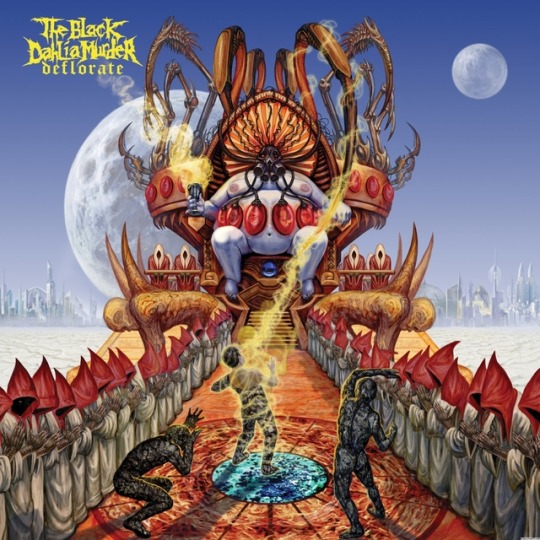




The Black Dahlia Murder Discography 2002 - 2017
#The Black Dahlia Murder#A Cold-Blooded Epitaph#Unhallowed#Miasma#Nocturnal#Deflorate#Ritual#Everblack#Abysmal#Nightbringers#Death Metal#Melodic Death Metal#Trevor Strnad#Brian Eschbach#Ryan Knight#Max Lavelle#Alan Cassidy#Brandon Ellis#Cory Grady#David Lock#Zach Gibson#Jon Deering#John Kempainen#Ryan Bart Williams#Shannon Lucas
25 notes
·
View notes
Photo

#the black dahlia murder#everblack#melodic death metal#death metal#metal#trevor strnad#alan cassidy#brian eschbach#ryan knight#max lavelle
30 notes
·
View notes
Text
ALBUM REVIEW: The Black Dahlia Murder – Verminous - Metal Blade
ALBUM REVIEW: The Black Dahlia Murder – Verminous – Metal Blade
Taking their name from the brutal unsolved 1947 murder of Elizabeth Short, appropriately monikered Michigan death metallers The Black Dahlia Murder unleash a slightly different kind of visceral hell on Verminous (Metal Blade), their ninth full-length studio album. (more…)
View On WordPress
#Alan Cassidy#album reviews#American death metal bands#Arch Enemy#Brandon Ellis#Brian Eschbach#Carcass#classic death metal#death metal#Elizabeth Short#Gary Alcock#Max Lavelle#Melodic Death Metal#Metal Blade Records#Trevor Strnad
0 notes
Photo


May I offer you a Viera Varlen (Vierlen? Bunlen?) in these trying times
Bonus: G’raha can’t work out why his neck hurts all the time now...

#max height male viera? max height male viera.#ffxiv#male viera#ff14#endwalker#miqote varlen was a much more acceptable height for g'raha's wistful gazing#this is a little less comfortable for him haha#varlen lavelle#varlen in eorzea#reluctant does ffxiv#i go between short fluffy hair and long flowy hair as the mood strikes#this is short floofy mode
15 notes
·
View notes
Text
just got Gustav. neat. ^^

hey so can you tell your son to come home 3 more times so i can +10 him, thanks, man.
#i'm SO close to +10 valentine alfonse#...also i'm tempted to give d/r save to v!alfonse after i max lavel gustav for his lv.40 dialogue#d/r save looking mighty tasty for v!alfonse to use#fire emblem heroes#feh#joker.txt#...also level not lavel i don't see my mistakes until i hit post
6 notes
·
View notes
Text



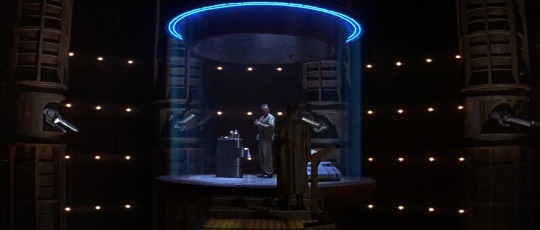






Judge Dredd (1995)
Director - Danny Cannon, Cinematography - Adrian Biddle
"The innocent exist only until they inevitably become perpetrators. Guilt and innocence is a matter of timing."
#scenesandscreens#sylvester stallone#judge dredd#dredd#Al Sapienza#danny cannon#Adrian Biddle#Armand Assante#rob schneider#jürgen prochnow#diane lane#max von sydow#Joanna Miles#joan chen#balthazar getty#Maurice Roëves#ian dury#Mitchell Ryan#Bradley Lavelle#Lex Daniel#scott wilson#Christopher Adamson#ewen bremner#Phil Smeeton#Peter Marinker#Angus MacInnes#Mark Moraghan
77 notes
·
View notes
Text
Judge Dredd (1995)
In today's review, I'm reacquainted with the crime-filed streets of Mega-City One. As I attempt a #positive review of the 1995 action blockbuster adaptation Judge Dredd #SylvesterStallone
#ArmandAssante
#RobSchneider
#JürgenProchnow
#MaxvonSydow
Despite how bleak the current affairs of humanity are, it is always fun to pontificate how worse those who come after us will have it. The same struggles we face now amplified by 100 combined with the worries the future can bring. One comic took a darkly humorous look at current society in a future setting and made a satirical critique that remembered to back up its unique world with great action…

View On WordPress
#1995#action#Al Sapienza#Angus MacInnes#Armand Assante#Balthazar Getty#Bradley Lavelle#Christopher Adamson#Diane Lane#Ewen Bremner#film#films#Ian Dury#Jürgen Prochnow#Joan Chen#Joanna Miles#Mark Moraghan#Maurice Roëves#Max von Sydow#Mitchell Ryan#Movies#Phil Smeeton#positive#review#Rob Schneider#Sci-Fi#Scott Wilson#Sylvester Stallone
0 notes
Text
discussion on this post, @horatiovonbecker asks @otatma their opinion about extended families as an alternative to the nuclear family. @otatma replies that it is “a good thing to strive for” but “depends hugely on the family being nontoxic.” true enough!
as it’s my activity feed and they can’t stop me i’ll butt into the conversation. i grew up in an extended family. i lived with my mother and my maternal grandparents, and my aunt would live with us some days out of the week. all of this was accomplished in a 2-bedroom bungalow. i had very little privacy and i hated it; when i was 15 i ran away. my mother pleaded with the council and we managed to secure a terraced house in a socialized housing estate with a bedroom for each of us, plus a spare room (almost unthinkable today). we live near our grandparents and they visit every day.
when i was 16 i met my absentee father. he had been homeless in England and imprisoned in Scotland and when he returned to Ireland that year i found him living in a rhizomatic extended family scenario spanning four generations and three households. they were always being chased out by landlords or paramilitaries and relocating and, in any case, one could never predict who would be living in which house at any time; children would live with grandparents one month, parents the next, aunts and uncles the next, and so on. even husbands and wives did not always share a home.
[long post: 3k words, on the historical development of family structure in Ireland and England and what it means for monogamy, the family and anarchy]
based on this i believed the extended family to be an Irish institution. this is an assumption i shared with most sociologists and historians until about the 1990s (Seward et. al., 2005, pg. 2). the standard narrative was that, world-over, families historically lived in large, three-generation households and that thanks to the industrial revolution this was deteriorating. “Max Weber himself implies in his magisterial way that the rise of capitalist organisation was associated with 'the household community shrinking' ” (Laslett, 1974, pg. 7). Ireland was traditionally conceived of as an exception to this process of deterioration as, on this account, the extended family remained dominant while the rest of the world was going nuclear. it turns out to be the reverse in both cases: the extended family was never the dominant family structure anywhere (ibid. pg. 2-3; Vann 1974, pg. 3-4), except for in Ireland beginning in the 19th century, where over the course of the 20th century it did deteriorate (Laslett, 1974 pg. 34; Gibbon & Curtin, 1978).
the reason for this is embarassingly obvious once you realize it. the fact is that not all families in a society can be extended families. if all children remain in the family home along with their children into perpetuity this house will soon have the population of a small town. this is actually the origin of society proposed by Filmer in Patriarcha (1680), where parental authority becomes the “fountain of all Regal Authority” as their progeny multiply, until humanity is scattered about in the Confusion of Tongues (pg. 11-15). without a Confusion of Tongues to interrupt the exponential increase (and millions, rather than thousands, of years to account for) we have to imagine another sort of family structure. the 19th century sociologist Frédéric Le Play proposed that a new family structure emerged out of ancient patriarchy which he called the Stem-Extended Family. on this account one son was selected to inherit and he remained at the family’s residence; the other siblings were dispersed (Gibbon & Curtin, 1978 pg. 2-3).
to the extent that this form of family organization did exist, it could not have been the dominant form. in a family with three sons, two of them would have to go and form nuclear families with their spouses. they might go on to build their own extended family, or they might not. in many societies the extended family was indeed considered “a good thing to strive for”, and this was the position adopted by the conservative Catholic Le Play, and later accepted by the Catholic Church, who lobbied for policy interventions that would stem the tide of nuclear proliferation in Ireland, particularly by limiting employment opportunities for women. For example, women were barred from civil service positions until 1973 (Seward et. al., 2005, pg. 7).
if this is the case, how could the extended family become the dominant form of family structure in Ireland in the 19th and early 20th centuries? the most significant factor was the reorganization of agriculture carried out by English colonial interests; after the infamous Potato Famine the population of Ireland almost halved (after already more than halving after Cromwell’s genocides), as well as the almost constant state of war that Ireland was submerged in (continuing into the 90s in the occupied North). in the aftermath it was necessary for families to consolidate (Seward et. al., 2005, pg. 3). on top of this, fertility was exceptionally low and emigration was exceptionally high (in the North it remains very high, especially among Catholics). as a result, more generations could live together, and children were more likely to leave the country than disperse elsewhere in Ireland (Seward et. al., 2005, pg. 14). throughout the 20th century, as industry and free secondary education were introduced to Ireland, more children began to move from country to town and nuclear families rapidly replaced extended ones (Seward et. al., 2005, pg. 6).
my family tree more or less follows this narrative along. in the chaos following the Land War my great, great grandmother was the head of a large intergenerational family involving aunts and uncles, as well as an adopted street orphan. my great grandfather met a homeless woman possessing a child out of wedlock and fell in love with her; they moved to this town and rented a house while he sought work as a street sweeper, starting a new nuclear family. in the 40s my grandmother worked in factories until she married my grandfather, a sailor, and they began their own nuclear family in the same town, renting different little apartments until, thanks to the state of the housing market in the 80s, they purchased the modest accomodations aforementioned. by the 90s this arrangement threatened to become a new Stem-Extended Family (with my mother and i playing the role of inheriting sons), but it proved inoperable in the new context of the 21st century’s mechanized Ireland, and we spilled over into our own single-parent home. given that both me and my aunt are infertile, the maternal line terminates here.
does it follow that we ought to give in and admit that the nuclear family is the natural unit of human society, and that the extended family is possible only in the middle of an ongoing genocide? despite what we’ve just said, there doesn’t seem to be good evidence for this either. while Gibbon & Curtin characterized a debate where Laslett “advanced the iconoclastic [proposition] that there had been little essential historical change in family structure” (1978, pg. 3) this doesn’t seem to actually be Laslett’s position. Laslett argued that family size has not changed considerably throughout history, but on the very first page of his landmark Household and Family in Past Time (1970) he emphasizes that he is “not concerned with the family as a network of kinship” and instead defines his area of research in terms of “coresident domestic groups”, which might bear little relationship to kinship structures. in the past the household very frequently involved not just blood relatives but “lodgers, boarders and visitors” (Vann, 1974, pg. 5) as well as slaves and servants. Vann quotes Etienne Hélin's caution that “[a]rithmetic means, although they varied so little covered a whole series of different situations” and describes how post-industrial English households had twice the number of blood relatives per house as pre-industrial ones, but fewer lodgers, and thus about the same mean. the difference between historical and modern families might not be one of size but of an increasing emphasis on blood relations.
it may come as a surprise that, as a matter of fact, Old English has no word for family. they have a word for relatives in general (sibb), for tribes (cynn, the root of Modern English kin), but the basic social unit known to the Anglo-Saxons was the hiw (and its many compounds), which might be translated ‘household’ (or, indeed, ‘coresident domestic group’). who belonged to a hiw? it was somewhat nakedly a property relation. it was not only a man’s wife and children but also his servants, his slaves, as well as his animals (Stanley, 2008, pg. 1). the Textus Rofensus makes only one distinction between members of a household, that they be “slaves or free” (ibid. pg. 7). it could also refer to a monastic group, involving the whole cloister. Stanley notes (and it seems true to me) that there is a virtual absence of family relations in the corpus of Old English literature. in fact i cannot think of a single example, except perhaps for the monster Grendel and his mother. in the mournful Wife’s Lament and the passionate Wulf and Eadwacer the emphasis is on completely personal affections and seductions, and in any case both depict forbidden relationships outside of the hired.
correspondingly, we find that the average Anglo-Saxon home was a large one; typically they were a single room which measured about 50 square meters and “could have accomodated up to about a dozen or so people” (Hines, 2003, pg. 139). there is no reason to suppose that this was to accomodate several generations of blood relatives; the Anglo-Saxons had many, now very unfamilliar, relationships to populate their houses with. there was husband, wife, and concubine, along with their children; there was slave and hostage (Lavelle, 2006), including many orders of slaves with different status (such as the relatively respectable title of bryti, a sort of ‘head slave’); and indeed guest, visitor, boarder, and in the case of lords and aristocratic thegns, perhaps retainers. in Beowulf about thirty thegns sleep with their lord in Heorot, pulling aside the bench-planks and replacing them with straw beds at night (and when the Geats arrive they incorporate them as still more visitors). we know that at least some beds were placed in recesses in the walls and had curtains (Wright), perhaps to accomodate private intimacy between husband, wife and concubine or, indeed, guest, retainer, hostage, slave, or (why not?) animal. even when husband and wife are the only kin relatives in residence we would hesitate to call this arrangement a ‘nuclear family‘, or indeed an ‘extended family’ should it include a grandparent.
why has industrial modernization corresponded with the narrowing of the productive unit of society to the nuclear family (or, increasingly, the single parent family)? why have non-blood relations become so systematically excluded from the household? these seem like open questions to me. our own experience leads us to suspect conditions placed on family structure by the labour market together with city planning. until the 70s in Ireland, as we discussed, it was typical (and indeed lawful) for wives to stay at home and husbands to work; today very few workers could afford to keep their wives at home, even without children. houses are also too small to sustain extended families (nevermind concubines, hostages and the rest). old council houses such as ours have two bedrooms, one for the parents and the other for the children, along with a room for guests. today they do not include the guest room. there are, in addition, only two common rooms: a family room and a kitchen. it is not only difficult to accomodate three generations in these houses (the small guest bedroom is a poor substitue for the reitrement room of many 19th century Irish houses), it is difficult to accomodate even two generations. teenagers will already complain about sharing a bedroom, and one sibling might take up the guestroom. but we know of women with six, seven, as many as twelve children who live here. as adults they could fill at least three of such houses. all of this is possible only on the theory that as the children grow up they will move out into their own homes.
so. it is tempting to analyze the family situation abstractly, counting up the merits and dysfunctions of different systems and comparing them. for example, using Hirschman’s well-known framework of “exit” and “voice”, we might ask how effective the different forms of family structure are at responding to dysfunction (abuse, neglect and so on). the extended family, we might say, gives a child better access to “voice” - they can turn to parents, grandparents, aunts, uncles and siblings for help. your mother might answer to your grandmother who is therefore well poised to address parenting issues, while your father can probably smoothe things over with your uncle if you quarrel. this means that you actually have to worry less about “toxicity” in the family compared to a nuclear family where parents aren’t accountable to anyone. however, in case of a family wide problem, you may have much less room to “exit” compared to a nuclear family, where exit is expected.
which one is better? you might reply that the extended family sounds better. it very well might be; but in reality you’ll never get to act on this exercise in judgement no matter how much striving you do. the nuclear family does not predominate because of the tyrannical thirst for the awesome power of parenthood (no matter how much we do find this thirst satisfied), but because of the given conditions of labour, housing, inheritance and so forth. this is why @horatiovonbecker can reply that all of this is “fair enough” but that they ”don't think it follows that discouraging monogamy will help.” no, surely it does not follow. especially now that we know that family size and kinship relations are not essential features of domestic organization. why was monogamy ever implicated in the first place?
now it seems like a curious slip of the tongue that when Goldman and Parsons disagree about monogamy they do so by attacking and defending the family by turns. but at that time monogamy was not so easily separable. free love was not really polyamory. it was this and also the abolition of both marriage and parenthood, as they understood both as property relations: “marriage slavery”, as even Parsons called it, and parental ownership of children. it was also the abolition of sex work, which they understood as the "public” expression of the subjugation of women which finds its “private�� expression in marriage (Marx & Engels, 1848, pg. 24-25), ie. that women are dependent on men’s property and must acquire it by marriage or by sexual labour. as a corrolary they advocated for divorce (which became an immense priority to later Soviet planners who designed mobile, modular homes which would allow couples to separate and cohabit arbitrarily). it was also access to contraceptives and to abortion, as well as, believe it or not, very often the advocacy of eugenics (on the account that with abortion, contraceptives and the freedom to select partners, the previously blind and mute force of sexual reproduction would become domesticated to the rational will; see the anarchist journal Moses Harman founded in the 1880s, Lucifer the Light Bearer, later renamed the American Journal of Eugenics).
this constellation of problems no longer appear all together. after most women entered the conventional work force we could no longer as easily see monogamy and marriage as a relationship of slavery. as we say in the previous post, for many women the struggle is that they are too independent, saddled with childrearing and wage labour and housework with only the cold comfort of the day-care for assistance. for this reason sex work no longer appears as anything special compared to the other forms of labour women do out of necessity; “sex work is work” is the guiding catchphrase of militant sex workers. contraceptives and abortion still appear as a leading issue in feminist agitation but we no longer imagine they have the power to transform the everyday life of the household (nevermind summon forth the genetic Ubermensch). all together the abolition of marriage was replaced, as @birlinterrupted reminds us, with its extension: gay marriage. as of right now monogamy and marraige are still inseparable (i can now marry one of my girlfriends but not all three), but we think it need not always be. all together the program fragmented as its success was realized in pieces and none of them were actually irreparably fixed by the property relation (even if they did emerge from it).
Engels actually believed that a true equality of the sexes would, “according to all previous experience,” result in monogamous men and polyandrous women (Engels, 1884, pg. 43), but he admits that we can only conjecture about “the way in which sexual relations will be ordered after the impending overthrow of capitalist production.” he finishes this thought with this remarkable little statement:
[W]hat will there be new? That will be answered when a new generation has grown up: a generation of men who never in their lives have known what it is to buy a woman’s surrender with money or any other social instrument of power; a generation of women who have never known what it is to give themselves to a man from any other considerations than real love, or to refuse to give themselves to their lover from fear of the economic consequences. When these people are in the world, they will care precious little what anybody today thinks they ought to do; they will make their own practice and their corresponding public opinion about the practice of each individual – and that will be the end of it.
the straightforward correspondence between property, economic dependence and monogamy is still here, and which to us now seems insufficient to the problem (ie. the problem still persists after these given conditions are eliminated). broadening the question from questions of marriage, sexual access and economic dependence to the more general question of the organization of the household in general and the necessary social and economic conditions proper to it would clarify what’s really at stake in domestic oppression, the organization of reproduction, and so on. but it remains true that we can only remain sensitive to trends, to those of us organizing new experiments with the household, and where new opportunities might open as the present conditions dig their own grave.
Let’s give the final word to an old friend. What is the Family, Renzo Novatore? Why, nothing but “the denial of life, love and liberty.” Nevermind his entry for Love, which is a “deception of the flesh and damage to the spirit, disease of the soul, atrophy of the brain, weakening of the heart” and so forth.
118 notes
·
View notes